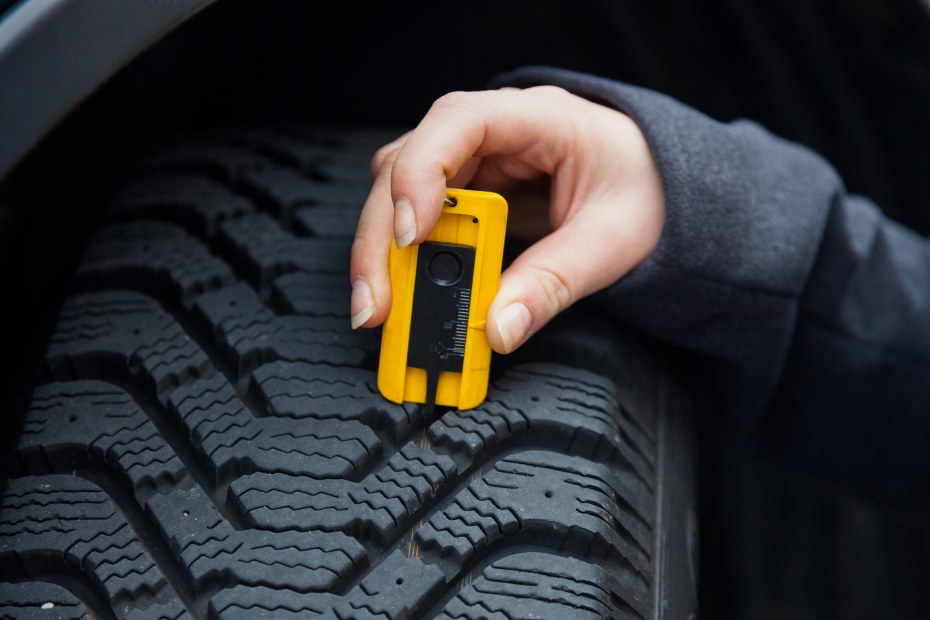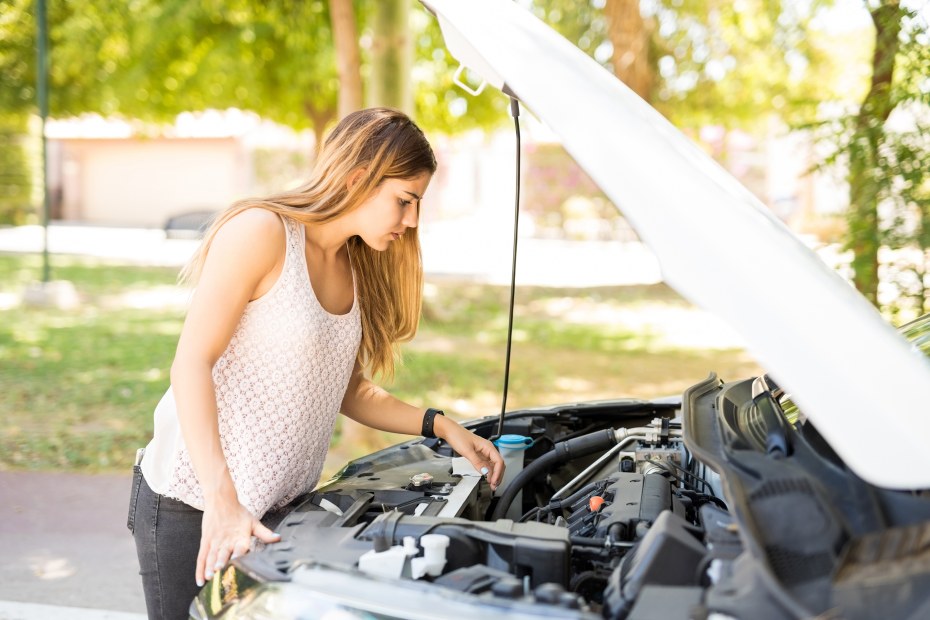Making sure your car is road ready before you pack up will help you avoid unintended stops, emergency tows, and visits to a mechanic. Here’s some advice on making sure it’s ready to roll.
Schedule routine maintenance.
Is your car due for a milestone checkup or routine maintenance? Regular maintenance and periodic inspections can extend the life of your vehicle systems and keep them functioning efficiently. Check your car maintenance schedule in the manual and make any necessary appointments to bring your car’s service record up to date. If your vehicle is not due for service and it hasn’t been inspected in a few months, you can give your car a once-over at home to ensure it’s still road trip ready.
Check the battery.
The battery on a traditional gas-powered vehicle typically lasts five to seven years, but climate and frequency of use can shorten its lifespan. In Arizona, the average lifespan is only 2.5 years according to Shawn Lowery, AAA Auto Repair Center manager. You can test your car’s battery with a voltmeter or visit a repair shop (many offer free tests, particularly during the summer months). Or, if you’re a AAA Member, you can get free on-the-spot battery testing—a mobile technician will come to you, and replace the battery if needed.
Attend to warning lights.
Familiarize yourself with your car’s dashboard warning lights, and book an inspection or repair with your mechanic or a AAA Owned and Operated Auto Repair Center to attend to any warning or service lights that have recently come on.

An inexpensive tread depth gauge can let you know if it's time for new tires.
Test the tires.
Tread
Vehicle safety starts with the tires. “Don’t be fooled into thinking that grooves and tread are for wet traction only,” AAA lead mechanic Alonso Ramos says. “Think about a pair of shoes. Do they perform well when they are worn?”
The minimum thickness considered safe by most tire manufacturers is 3/32 of an inch, and wear indicator bars show when it’s time for new tires. These flat rubber bars are nested in the deepest grooves on the tread, and they get easier to spot as the tread wears down. When the indicator bars are nearly flush with the surrounding tread, it’s time to replace the tire. Inspect the tread all the way across and all the way around each tire—if the wear is uneven, it could indicate that your wheel alignment is off. Most manufacturers recommend replacing tires six years after their production date, regardless of tread wear. Extend the life of your tires by keeping them at the recommended air pressure and rotating them every six months or 7,500 miles.
Tire Pressure
When tires are underinflated, they wear more quickly, are more likely to fail and cause a crash, and can adversely affect fuel economy. Built-in tire pressure monitoring systems are effective at alerting you to unexpected flats and dangerously low tires, but they only warn you when pressure is 25 percent or more below the recommended pressure, which is well below optimum for daily driving.
The proper pounds per square inch (PSI) for your vehicle’s tires can be found on the side of the tire as well as on the driver’s-side door jamb if you are still using the original tires. Tire pressure should be checked at least once a month with a digital tire gauge, which costs $10 or so and fits in the glove box. It’s best to test the pressure when the tires are cold (because the air inside is at its most compressed).
When refilling cold tires, inflate to the PSI recommended on the tires. When refilling warm tires, inflate to about 80 percent of the maximum PSI listed on the tire (for example, if the maximum PSI listed is 40, you will multiply that by 0.8 and fill your tires to 32 PSI). Overinflated tires can be damaged more easily by potholes or road debris. Remember to check—and top off—your spare tire if you have one.

Take a look under the hood before heading out on a long trip.
Check all fluids.
Your vehicle runs on six essential fluids: engine oil, windshield-washer liquid, and fluids for the power steering, brakes, transmission, and radiator.
Engine Oil
Engine oil is vital for cars with combustion engines. Before checking, read the manual to determine if the car should be warm or cool for an accurate reading. When the car is the proper temperature and parked on a level surface, use the dipstick under the hood to make sure the oil does not need to be topped off. If the oil on the dipstick is no longer transparent and is thick and dark, it’s time to schedule an oil change.
Conventional wisdom used to be that you should change your engine oil every three months or 3,000 miles. Newer vehicles, however, recommend longer intervals of 5,000 to 8,000 miles. If your vehicle requires synthetic oil, you might be able to go as far as 15,000 miles between oil changes. The best way to know what kind of oil your vehicle requires and how often it should be changed is to consult the owner’s manual. While newer vehicles will inform you that it’s time for an oil change based on vehicle mileage, some advanced vehicle systems will monitor operating conditions to identify when the oil is starting to degrade, and then notify you accordingly.
Washer Liquid
Washer fluid is the easiest fluid to check and replace. Most commercial brands contain methanol, a poisonous alcohol, to prevent freezing, but you can substitute common household ingredients, such as diluted glass cleaner or white vinegar and distilled water, to make your own. In both cases, rubbing alcohol can be added to make a winter mix that won’t freeze in the reservoir or tubing. It’s also important to check wiper blades, particularly in drier climates, to be sure the blades haven’t degraded in the sun, which will cause streaking when it rains.
Power Steering Fluid
Power steering fluid can be checked when the vehicle is warm via a dipstick under the hood or by checking the fill lines if your tank is semi-transparent. You can add more if necessary, but fluid that is dark brown or black needs to be replaced. If your car becomes more difficult to steer, this usually signals a leak, and should be checked by a qualified mechanic before you continue to drive.
Brake Fluid
Brake fluid can be similarly inspected by looking at the fluid reservoir in the engine bay in most cars. (In some European models the reservoir may not be as easily accessed and may need to be checked by a mechanic instead.) Make sure the fluid is translucent and falls within the proper range. Brake fluid is volatile and difficult to work with, so it’s safest to have a professional change it if needed. Also, an expert mechanic can check the entire braking system to make sure the brake pads aren’t overly worn and that there isn’t any air in the system, which interferes with proper braking.
Transmission Fluid
Checking the transmission fluid generally requires the assistance of a professional, and it is often included in a routine inspection alongside scheduled maintenance when possible. However, some cars have specific change intervals listed in the manual so you know when it’s time for the transmission fluid to be replaced. If you experience rough shifting, strange noises, or unexpected surging, there may be a leak in the system, and it should be inspected and repaired by an expert immediately.
Radiator Coolant
Coolant keeps the engine running at the proper temperature. It should be checked every 50,000 miles or before a long trip, and topped off if necessary. Check your coolant levels when the engine is cool and the car is parked on a flat surface. The fluid should sit between the minimum/maximum indicators on the tank. If you need to add radiator fluid, always ensure your engine is completely cool before opening the radiator cap to prevent burns.
Inspect belts and hoses.
In addition to fluids, belts and hoses keep your vehicle running. Always wait until the engine is cool when working under the hood. Hoses most often fail near the clamps or on bends, so feel for soft spots, inspect for nicks and cracks, and check for abrasive damage and peeling or crackling on the surface. When inspecting belts, look for cracks or fraying on the sides. If your vehicle is whining, chirping, or vibrating, you’re likely experiencing a tension problem with one of the belts. Such problems are normally best left to a professional for repair or replacement.
Prepare for the unexpected.
Even if you’ve done all the best preparation, unexpected incidents can occur. Keep an emergency kit inside the vehicle, always have plenty of water for all passengers, and carry a cell phone charger so that you can get in touch with emergency or towing services when necessary.
